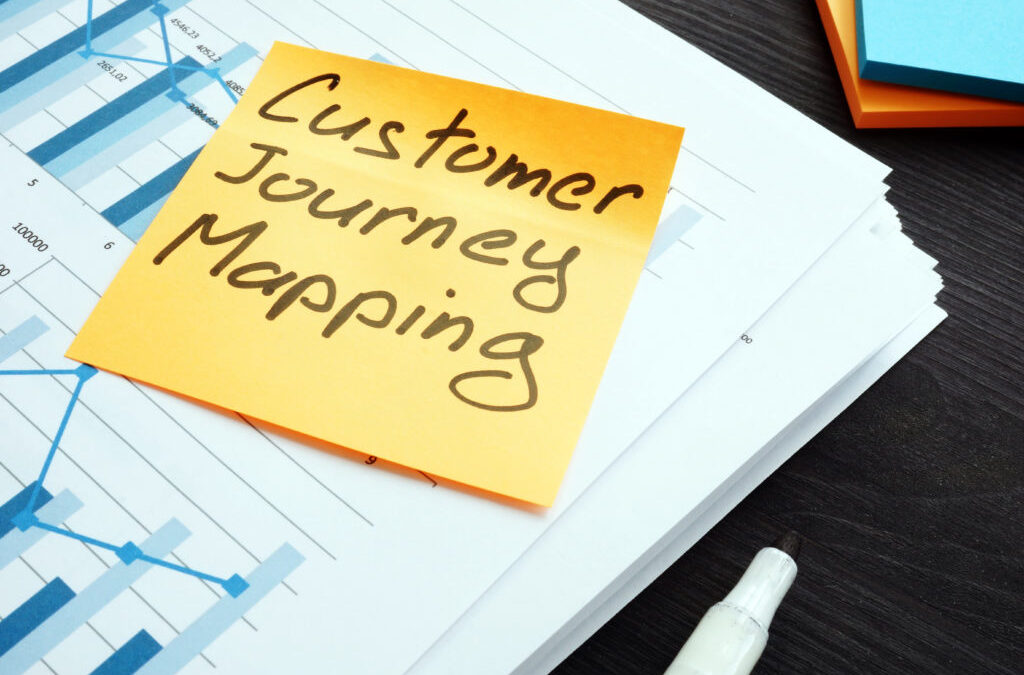Whether you’re marketing a service or a product, what you’re really doing is creating an experience. In fact, you’re creating a miniature journey for your customers with a beginning, middle, end, and (hopefully) a sequel. The beginning of the story might be the introduction of the product to the customer, whether it’s by word of mouth, digital ads, or direct mail marketing. In the middle of the story, the customer learns more about your product and gets to decide the ending. If the customer ends the story with a purchase, you have a better chance of having a sequel, which consists of a returning customer wanting to engage the experience you create again.
No matter which way you come at it, marketing’s cardinal purpose is to pull customers into your company’s journey and make them want to take another ride once they’re finished. The thing is, different people will experience your marketing in different ways. Many marketers have turned their attention to their customers’ journeys, focusing on the emotional states and individual steps a customer goes through on his or her way to buy a product. Marketers have worked to map these customer journeys, creating Customer Journey Maps (CJMs). These maps are more than just the points at which customer and company touch; they include the activities and goals of the customer in order to provide a broader context. Once a company understands this broader context, it can make its marketing efforts that much more effective.
Customer Journey Maps 101
So, we know that CJMs can provide crucial insights into the worlds of customers. But how do they really work? What are they? Well, we have three things you need to keep in mind when it comes to CJMs.
- CJMs are not touchpoint maps. We mentioned this briefly above, but CJMs are definitely different from touchpoint maps. A touchpoint map collects and arranges a company’s interactions (“touches”) with its customers. Many people mistake CJMs for touchpoint maps, but they are two separate things. Because a touchpoint map roots itself in interactions, it fails to include essential context and customer goals. Just because a customer interacts with your company does not mean the customer is ready to buy. Believe us, it’s easier to turn “touches” into conversions when you understand where a customer is coming from.
- It’s not about the picture; it’s about the process. CJMs come in all different shapes and sizes. Why? Because they’re most valuable when focused on the key points of customers’ journeys rather than fitting those points into pre-designed templates. On top of that, customers are so different from one another, trying to fit them into a template pasteurizes the data and makes it less useful.
- CJMs need segments. This follows well off of our last point, which stresses the need for individualization in CJMs. Because each customer goes through a different journey, CJMs need to examine their individual paths. There will be similarities, and that is where segments can come in handy. However, resist the temptation to go segment crazy. You’ll lose valuable insights that could provide you with those extra sales you need so much
How Can You Use CJMs?
CJM’s delivers massive value by helping you understand what your customers think and do in their journeys. You can use this information and smart marketing tactics to take your business to the next level. Here are a few great things you can do with the information from a
CJM:
- Create partnerships with other businesses. There’s a good chance your customers’ journeys will include other companies, and you might be able to partner with those companies to get your marketing materials in front of your customers sooner.
- Find new offerings. You might find that your offerings have gaps that drive some customers to shop elsewhere. Or, your offerings may be too narrow, only catering to a small section of your consumer base. This is great information! You can amend your offerings to fill those gaps and therefore retain more customers.
- Find opportunities for cross-selling. Some of your customers’ journeys will probably involve additional purchases. These customers can be great candidates for a cross-selling program to keep them engaged with your company.
- Customize your content. What are your customers thinking about at certain parts of their journeys? A CJM can give you this information, allowing you to fine-tune your messages to each part of your customers’ journeys. Our team can help you with this!
Learn more about how we can help you understand your customers and give them an experience they never want to end!






